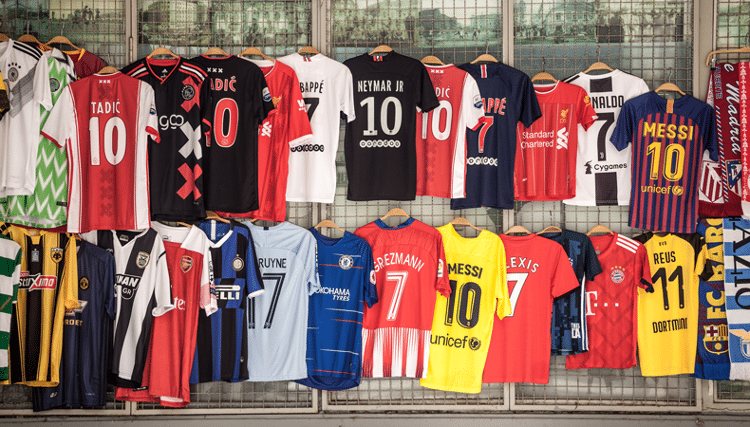Sportswear and the circular economy

We spoke to Paul Foulkes-Arellano, founder of Circuthon, a circular economy consultancy, and a keynote speaker at this year’s Sportswear Pro conference, where he discussed innovations in sportswear material.
Tell me a little about yourself and your work at Circuthon and your other circular initiatives…
Circuthon was founded in 2020 to help major corporates and ambitious small and medium-sized businesses deliver genuine circular solutions to market. Much of our work has been with footwear and fashion brands, as well as fast-moving consumer goods.
How is consumer demand influencing the adoption of sustainable materials in the sportswear industry?
Customers are not necessarily looking to sportswear to deliver their ‘green’ purchases. I think the sportswear industry has been influenced by the fashion industry. The brands are making changes, and consumers like it. But given the amount of polyester and nylon sold, sportswear buyers are not exactly demanding low-impact material choices.
What market trends are driving innovation in the use of circular economy principles in sportswear/garment printing?
Retailers seeing the trend across the rest of their stores are driving innovation in sportswear. They are pushing the brands to deliver a more circular offer, whether that be front-end textiles or back-end repair and resale.
What are the most interesting innovations in materials used in sportswear/other apparel?
I think the most promising materials have a 360-degree approach to sustainability regarding the nine planetary boundaries [a framework to describe limits to the impacts of human activities on the Earth system]. Biosynthetics are becoming increasingly popular (nylons and polyesters made from plants, not oil) and other natural materials made from cellulose. The most promising textiles are made from high performance natural fibres – Flocus kapok, Bananatex and Naia (made from cellulose), plus plant-based TPU [thermoplastic polyurethane] for footwear (Algreen, Algenesis and so on).
.png) Paul Foulkes-Arellano
Paul Foulkes-Arellano
How do these materials perform compared with conventional materials in terms of durability, cost, and environmental impact?
Sportswear brands buy technical fabrics and materials, so only those materials that offer durability will enter the market. The cost varies enormously – so brands like Flocus, OceanSafe and Polybion that have parity pricing will do extremely well. Right now, lower impact will not be achieved at an industry level until suppliers match the durability and price of existing petrochemical products.
What next-gen fabrics are around the corner?
I think colourants and pigments are the next big stepping stone. Brands have been held back so far, as all pigments and colour derives from fossil fuels. Now there are metallic and pearlescent inks and films derived from plants. Sparxell is leading the way on this with new-to-world colour effects derived from cellulose.
At the Circular Fashion Initiative you emphasise the importance of ‘absolute circularity’ – what does this mean and is it achievable?
Absolute circularity requires a complete change of mindset. We need sports kits that last for five years, running shoes that are repairable at home, and the end of throwaway sports apparel.
When you look at the mountains of fashion waste they are primarily made up of sportswear. The clothing needs to be durable above all, and then capable of being reprocessed/repaired without crushing and recycling.
It’s absolutely achievable, but it will take another five to 10 years. The sportswear industry progresses very fast once it has a goal in sight.
What is your recently published book about – how would it be useful to our readers?
Materials and Sustainability, which I co-authored with Dr Julia Freer Goldstein, is a panoramic view of all the materials we use for manufacture. The focus isn’t on textiles but on manufacture of all kinds. I think the chapters on 3D printing and novel materials will be of particular interest – that’s where sportswear is moving. The legislation around circularity and toxics that is covered in various chapters is also highly relevant. Sportwear currently creates significant amounts of waste and that will be heavily penalised in the next five years, not just in the European Union but in all major markets.
What are first steps for printers trying to move towards true circularity?
2024 to 2025 is when sportswear is really waking up to circularity. I would cite Decathlon and On Running as the true advocates, and but most big brands still need to catch up. It’s prime time for printers to latch onto circularity, take new solutions to their clients, because the market is wide open. Big brands are looking for ready-made solutions. Anyone who can incorporate low impact, traceability (think Polytag) and resale into their model is onto a winner.
What impressed you at Sportswear Pro and the FESPA Global Print Expo 2024?
Sportswear Pro attracted experts in manufacturing (for example, the Pattern Project), sportswear doctoral students, industry veterans and textile pioneers. The range of knowledge was vast. Then entering FESPA Global Print Expo, you could see that all the tech was there – perfectly capable of delivering circularity because of the sheer amount of engineering and expertise. We are moving to a world where textiles are no longer dyed but printed (think Alchemie Technology). The opportunities for the exhibitors are enormous as we head towards a different infrastructure and potential for onshoring.
Become a FESPA member to continue reading
To read more and access exclusive content on the Club FESPA portal, please contact your Local Association. If you are not a current member, please enquire here. If there is no FESPA Association in your country, you can join FESPA Direct. Once you become a FESPA member, you can gain access to the Club FESPA Portal.
Recent news

The personal touch: visit Personalisation Experience’s SmartHub Conference 2025
Join the SmartHub Conference at Personalisation Experience next month to stay ahead of the latest tech and trends.

How to build brand trust using customer reviews
Reviews can benefit or damage your business’s reputation. From spreading the word to social proof, here is why reviews matter and what you can do to manage your customer reviews to improve your brand’s reputation.

Regulation guidance: Extended Producer Responsibility
Extended Producer Responsibility (EPR) is now in effect. What does it mean for those in the print industry? Sustainability consultant Rachel England outlines everything you need to know.

How to maximise the automation of your production workflow
Workflow automation has evolved beyond basic file prep, now encompassing job submission, prepress, and postpress. Printers automate to boost productivity, cut waste, and address skill shortages. Implementing tailored automation, from RIPs to MIS, optimises throughput and profitability, minimising human intervention.